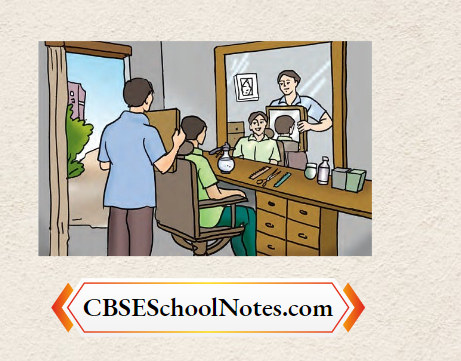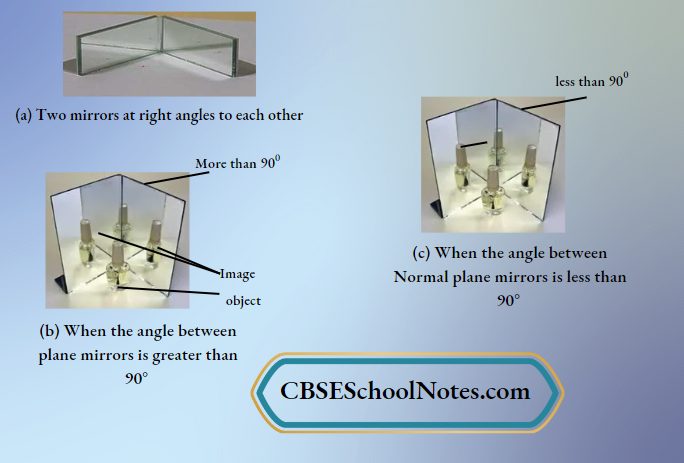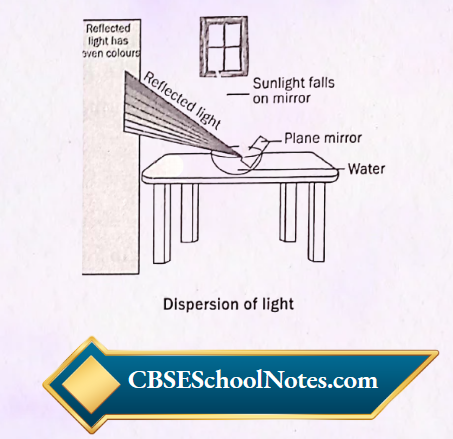CBSE Class 8 Science Chapter 13 Light Multiple Choice Questions
Question 1. We can see a non-luminous object when light
- Emitted by the object falls on the eye
- Is reflected from the object towards our eye
- Completely passes through the object
- Gets completely absorbed by the object
Answer: 2. Is reflected from the object towards our eye
Read And Learn More CBSE Class 8 Science Multiple Choice Questions
Question 2. Angle of incidence is equal to the angle of reflection.
- Always
- Sometimes
- Under special conditions
- Never
Answer: 1. Always

Question 3. Image formed by a plane mirror is
- Virtual, behind the mirror and enlarged
- Virtual, behind the mirror and of the same size as the object
- Real at the surface of the mirror and enlarged
- Real, behind the mirror and of the same size as the object
Answer: 2. Virtual, behind the mirror and of the same size as the object
Question 4. Which of these objects reflects light?
- The sun
- The moon
- A glowing bulb
- Burning wood
Answer: 2. The moon
Question 5. A tiny mirror Mis fixed on a piece of cardboard placed on a table. The cardboard is illuminated by light from a bulb. The position of eye with respect to position of bulb is shown in figure as A, B, C and D. In which position, mirror will be visible?

- A
- C
- B
- D
Answer: 1. A
Question 6. Two mirrors A and B are placed at right angles to each other as shown In figure.

A ray of light incident on mirror A at an angle of 20° falls on mirror Bafter reflection. The angle of reflection for the ray reflected from mirror B would be
- 25°
- 70°
- 50°
- 115°
Answer: 2. 70°

Question 7. A small hole P Is made In a piece of cardboard. The hole Is Illuminated by a torch as shown in figure. The pencil of light coming out of the hole falls on a mirror
At which point should the eye be placed so that the hole can be seen?
- A
- B
- C
- D
Answer: 1. A
Question 8. Light is falling on surfaces Si, % S3 as shown in figure.
Surfaces on which the angle of incidence is equal to the angle of reflection is/are
- Only S1
- S1 and S2
- S2 and S3
- All the three surfaces
Answer: 4. All the three surfaces
Question 9. As the angle between two plane mirrors is decreasing gradually, the number of Images of an object placed between them
- First increases then decreases
- First decreases then increases
- Increases
- Decreases
Answer: 3. Increases
Question 10. How does the eye change To focus on near or distant objects?
- The eye lens moves in or out
- The retina moves in or out
- The eye lens becomes thicker or thinner
- The pupil becomes larger or smaller
Answer: 3. The eye lens becomes thicker or thinner

















































